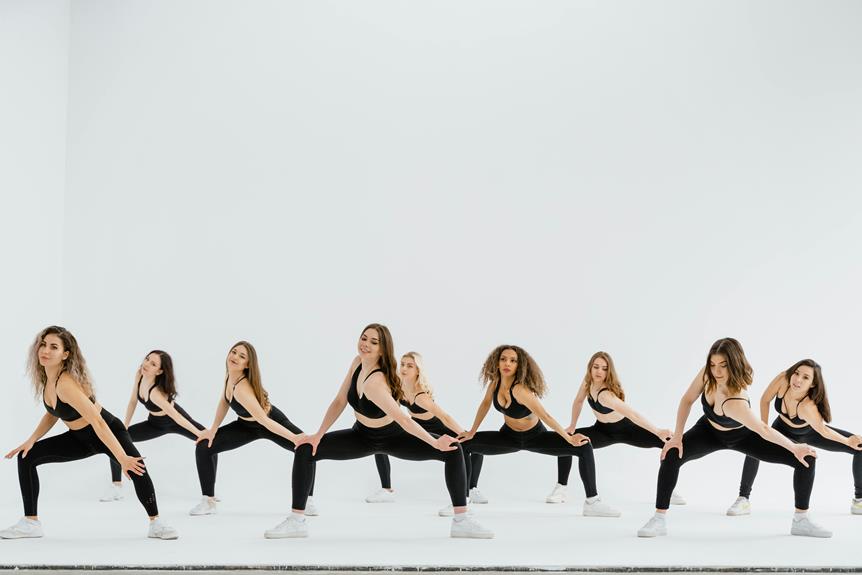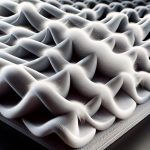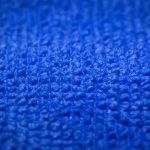When you think about sportswear, the fabric often plays a crucial role in your performance. Microfiber stands out with its lightweight nature and remarkable moisture-wicking properties, which help keep you cool during demanding activities. Its unique structure not only enhances breathability but also offers flexibility, allowing for a comfortable fit that moves with you. However, the benefits of microfiber extend beyond just comfort—there's more to discover about how it can impact your overall athletic experience. What else can this innovative material bring to your gear?
Table of Contents
Key Takeaways
- Microfiber's fine fibers create a larger surface area, enhancing moisture-wicking capabilities for improved comfort during workouts.
- The lightweight nature of microfiber supports performance without adding bulk, allowing athletes to move freely.
- Engineered for breathability, microfiber promotes airflow and temperature regulation, keeping the body cool during intense activities.
- High durability and resistance to wear ensure that microfiber sportswear lasts longer, even in tough conditions.
Microfiber Composition and Structure
Microfiber, made from synthetic materials like polyester and nylon, features a fine structure that enhances its durability and breathability in sportswear.
When you wear microfiber clothing, you'll notice how lightweight and soft it feels against your skin. This soft texture is due to the extremely thin fibers, which can be up to 100 times finer than human hair. The fine structure not only contributes to comfort but also creates a larger surface area, allowing for effective moisture management, though we'll discuss that later.
The composition of microfiber allows for a unique blend of strength and flexibility. You can move freely without feeling restricted, making it a popular choice for athletes and fitness enthusiasts. The tightly woven fibers resist abrasions and wear, meaning your gear can withstand intense activities and frequent washing without losing its shape or performance.
Additionally, the lightweight nature of microfiber means you won't feel weighed down during workouts. So, whether you're running, cycling, or hitting the gym, you can rely on microfiber sportswear to support your performance while offering comfort and longevity.
Moisture-Wicking Capabilities
When you're engaged in intense physical activity, you'll appreciate how effectively moisture-wicking fabrics pull sweat away from your skin, keeping you dry and comfortable.
Microfiber materials are engineered to absorb moisture from your body and transport it to the outer surface of the fabric, where it can evaporate quickly. This process is crucial during workouts, as it helps prevent the chill that can come from sweat-soaked clothing.
You'll find that microfiber sportswear is specifically designed with this moisture-wicking capability in mind. The fibers are finer than traditional fabrics, creating a larger surface area that enhances moisture management. As you move, these fabrics work hard to keep you dry, reducing the clinginess often experienced with wet clothing.
Additionally, moisture-wicking fabrics are lightweight and soft against your skin, making them a pleasure to wear during any sport or exercise. Whether you're running, cycling, or hitting the gym, you can trust that your microfiber gear will help maintain your comfort and performance.
Breathability and Temperature Regulation
Breathability is essential in sportswear, as it allows air to flow through the fabric, helping to keep your body cool and comfortable during intense workouts. When you push your limits, your body generates heat. If your gear traps that heat, you'll feel sticky and overheated, which can hinder your performance.
Microfiber has unique properties that enhance breathability. Its fine fibers create a larger surface area, promoting airflow and allowing moisture to escape. This feature is especially beneficial during high-intensity activities where you sweat more. With microfiber sportswear, you'll notice the difference in how quickly heat dissipates and how fresh you feel.
Temperature regulation is another key aspect. Microfiber can adapt to changes in your body temperature, drawing heat away when you're warm and retaining warmth when it's cooler. This adaptability is crucial for outdoor sports where conditions fluctuate.
Choosing the right microfiber sportswear will help you maintain optimal body temperature, so you can focus on your performance rather than discomfort. Whether you're running, cycling, or hitting the gym, breathable microfiber gear can be your ally in achieving your fitness goals.
Lightweight and Durability Benefits
The lightweight nature of microfiber sportswear makes it an ideal choice for athletes who need flexibility and freedom of movement during their activities. This material allows you to perform at your best without feeling weighed down. Additionally, microfiber is known for its durability, ensuring that your gear can withstand intense workouts and repeated use.
Here's a quick look at the benefits:
| Feature | Microfiber Sportswear | Traditional Fabrics |
|---|---|---|
| Weight | Ultra-lightweight | Heavier |
| Durability | High resistance to wear | Prone to wear and tear |
| Drying Speed | Fast-drying | Slow-drying |
| Breathability | Excellent airflow | Limited airflow |
With these qualities, you can count on microfiber sportswear to last longer and perform better, even in the toughest conditions. You won't have to worry about your gear compromising your performance. Instead, focus on your movements and push your limits, knowing that your lightweight and durable gear has your back.
Comfort and Flexibility in Motion
Microfiber sportswear not only offers lightweight durability but also enhances comfort and flexibility, allowing you to move freely without restriction.
When you're engaged in high-intensity activities, the last thing you want is clothing that constricts your movements. Microfiber's stretchy nature means it adapts to your body, providing a snug fit without being tight. You'll appreciate how it contours to your shape, making it feel like a second skin.
Moreover, the moisture-wicking properties of microfiber keep you dry and comfortable during workouts. As you sweat, the fabric pulls moisture away from your skin, preventing that annoying clinginess. This feature ensures you stay focused on your performance rather than discomfort.
Microfiber sportswear also breathes well, allowing air circulation to keep you cool. Whether you're running, doing yoga, or lifting weights, you'll find that the fabric's flexibility enables a full range of motion. From dynamic stretches to explosive jumps, you can be confident that your gear won't hold you back.
In short, choosing microfiber for your sportswear means prioritizing both comfort and flexibility, ensuring you perform at your best while feeling great.
Frequently Asked Questions
How Does Microfiber Compare to Other Fabrics in Sportswear?
Microfiber's lightweight and moisture-wicking qualities often outperform traditional fabrics. You'll find it regulates temperature better, dries faster, and feels softer against your skin, making it a top choice for activewear compared to cotton or polyester.
Can Microfiber Be Recycled or Is It Environmentally Friendly?
Microfiber isn't easily recyclable, and it often contributes to environmental pollution. However, some brands are working on developing more sustainable options. You should look for eco-friendly alternatives to minimize your impact on the planet.
What Types of Sportswear Typically Use Microfiber?
You'll find microfiber in various sportswear, like athletic shirts, leggings, and shorts. It's popular due to its lightweight, moisture-wicking properties, making it ideal for running, cycling, and gym workouts. You'll love the comfort it provides!
How Should I Care for Microfiber Sportswear to Maintain Performance?
To care for microfiber sportswear, you should wash it in cold water with mild detergent, avoid fabric softeners, and air dry. This keeps the fibers intact, ensuring your gear stays lightweight and performs at its best.
Are There Any Skin Sensitivities Associated With Microfiber Fabrics?
Yes, some people might experience skin sensitivities to microfiber fabrics, especially if they have allergies or sensitive skin. It's best to test a small area first and monitor for any reactions before wearing it extensively.
- Finding Flannel Fabric Suppliers for the Bangladeshi Market - June 21, 2025
- A Profile of Epyllion Fabrics Ltd: A Leader in Bangladeshi Textiles - June 21, 2025
- Price Analysis of Non-Woven Fabric Bags in Bangladesh - June 21, 2025







